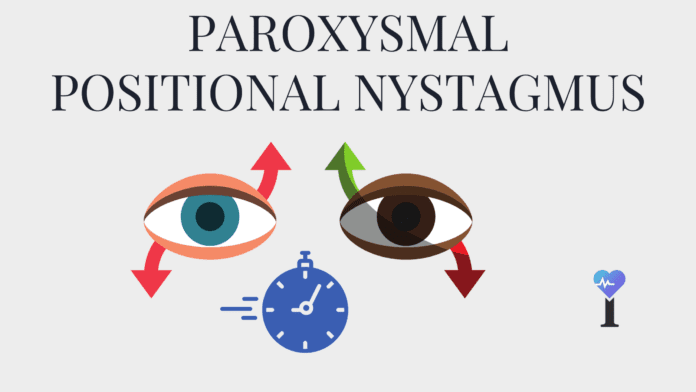Overview Of Paroxysmal Positional Nystagmus
Paroxysmal Positional Nystagmus is synonymous with the term Benign positional vertigo. Benign positional vertigo is the most common type of vertigo. Vertigo is the feeling that you are spinning or that everything is spinning around you. It may occur when you move your head in a certain position.
Commonly Associated With
Vertigo – positional; Benign paroxysmal positional vertigo; BPPV; Dizziness – positional
Causes Of Paroxysmal Positional Nystagmus
Benign positional vertigo is also called benign paroxysmal positional vertigo (BPPV). It is caused by a problem in the inner ear.
The inner ear has fluid-filled tubes called semicircular canals. When you move, the fluid moves inside these tubes. The canals are very sensitive to any movement of the fluid. The sensation of the fluid moving in the tube tells your brain the position of your body. This helps you keep your balance.
BPPV occurs when small pieces of bone-like calcium (called canaliths) break free and floats inside the tube. This sends confusing messages to your brain about your body’s position.
BPPV has no major risk factors. But, your risk of developing BPPV may increase if you have:
- Family members with BPPV
- Had a prior head injury (even a slight bump to the head)
- Had an inner ear infection called labyrinthitis
Symptoms Of Paroxysmal Positional Nystagmus
BPPV symptoms include any of the following:
- Feeling like you are spinning or moving
- Feeling like the world is spinning around you
- Loss of balance
- Nausea and vomiting
- Hearing loss
- Vision problems, such as a feeling that things are jumping or moving
The spinning sensation:
- Is usually triggered by moving your head
- Often starts suddenly
- Lasts a few seconds to minutes
Certain positions can trigger the spinning feeling:
- Rolling over in bed
- Tilting your head up to look at something
Exams & Tests
Your health care provider will do a physical exam and ask about your medical history.
To diagnose BPPV, your provider may perform a test called the Dix-Hallpike maneuver.
Your provider holds your head in a certain position. Then you are asked to lie quickly backward over a table.
As you do this, your provider will look for abnormal eye movements (called nystagmus) and ask if you feel like you are spinning.
If this test doesn’t show a clear result, you may be asked to do other tests.
You may have brain and nervous system (neurological) tests to rule out other causes. These may include:
- Electroencephalogram (EEG)
- Electronystagmography (ENG)
- Head CT scan
- Head MRI scan
- Hearing test
- Magnetic resonance angiography of the head
- Warming and cooling the inner ear with water or air to test eye movements (caloric stimulation)
Treatment Of Paroxysmal Positional Nystagmus
Your provider may perform a procedure called the (Epley maneuver). It is a series of head movements to reposition the canaliths in your inner ear. The procedure may need to be repeated if symptoms come back, but this treatment works best to cure BPPV.
Your provider may teach you other repositioning exercises that you can do at home but may take longer than the Epley maneuver to work. Other exercises, such as balance therapy, may help some people.
Some medicines can help relieve spinning sensations:
- Antihistamines
- Anticholinergics
- Sedative-hypnotics
- But, these medicines often do not work well for treating vertigo.
Follow instructions on how to take care of yourself at home. To keep your symptoms from getting worse, avoid the positions that trigger them.



